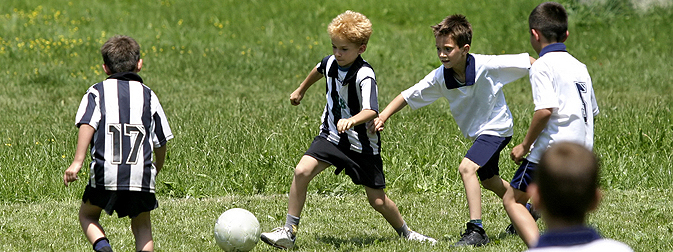A MODEL FOR DEFINING AND DESCRIBING FOOTBALL PROBLEMS
Defining football problems
To get to a proper football training you will first have to define the football problem:
- What is going wrong?
- What is lacking?
- The description of the problem needs to be precise.
The players must be able to identify with and take responsibility for the problem.
This will differ depending on the age of the players.
Important elements in defining the problem are:
- What is going wrong in relation to the plan?
- Who are the main players and which are the positions involved in the problem?
- At which moment does the problem occur?
- In which part of the field does the problem occur?
- What specific elements are affecting the game, the players and the circumstances? (e.g.., Importance of the game, the team's position in the league table, the weather, the conditions of the playing field etc.).
Example of a) to e) above:
- We have hardly had any scoring chances.
- The forwards receive low quality supply of passes from their own defenders.
- The link between the midfielders and the forwards is unsatisfactory - they do not understand each other.
- The defensive midfielders are not finding enough space to deliver long passes.
The problem gets worse when the other team's forwards apply more pressure.
Identifying the objectives
After defining the problem, the objectives for the next training session must be identified.
Objectives for the training session:
- The problem is always a football problem, therefore analyze the game.
- Describe the problem as precisely as possible in terms of time, space and function.
It is possible to have general objectives when working with young players in their respective age groups.
For example:
The defenders are too slow in their build-up play, failing to pass the ball quickly enough to forwards who have called for a pass.
So, the coach should not say that
- The pass is unsatisfactory or
- The speed is too low.
He should recognize that the problem is:
- The players are unable to see passing possibilities early enough.
- So the problem is a ATTITUDE PROBLEM.
Other examples:
Some common problems:
- A clear football idea does not exist (the players do not understand the objective, the solution or the
execution).
- Poor technical execution
(the technical ability of the players is insufficient to apply the solution).
- Inadequate physical attributes
(players are not sufficiently well conditioned to perform at a given level, a player is not fit enough to play in a certain position)
- Poor mental attitude (players cannot maintain a competitive state of mind when they are chasing the ball at
a high tempo continuously, the players react badly to disappointment or bad refereeing).
By the way, all football problems involve the brains. In order to create a good training situation, insight into and knowledge of the problem area is essential. But this knowledge cannot exist in a vacuum, the coach must establish a link to football.
For example, perhaps the solutions for the football condition training are too many and too directly taken from the general laws of fitness. Football training is, by definition, condition training and condition training is football training!
The key is to translate the general laws of fitness into a football context:
- Physical pressure
- Different types of physical pressure
- Methodology of physical pressure
- Control of physical pressure
The coach makes the translation.
To summarize, the solution to football coaching does not exist.
The more the experience of football and football coaching and the greater the knowledge of football, youth football and the process of learning how to play football, the better the problems can be solved.
It is no longer necessary to hide behind exercises that look like football but do not address the real problems.
Coaches must be capable of:
- Defining football problems? Who, what, where?
- Explaining the problems to the players; the problem is not the coach's problem but the player's problem
- Reading the game
Football for children
Characteristics of football for children
- Characteristic in football for children is the learning-process/developing process (Several stages of development).
- The learning process is a leisure activity, no pressure from any organization, no laws etc. Children can do it. There is no must.
- Comparing the learning process in the past and the learning process in the actual situation there is a big difference: Especially in time, space and ambiance.
- In the past football had the monopoly in leisure time. Children learned the game in a natural way, by playing and practicing for hours and hours. Some characteristics:
- always a relation to football
- endless repetitions
- always fun and imagination
These characteristics warranted a child centered and age related process.
- In the definition the aspect of teaching children to play football must be mentioned as a characteristic, a basic aspect in children's football
(Giving sense and fun is the main-task).
- Nowadays the natural development or learning process has changed in a more controlled process to spend the limited time more efficiently.
- More efficient means a policy which is based on the following principles:
- competitions (small-sided games) are means to develop, not an aim.
- training-forms are structures as simplified games.
- ages and talents: (take the age into account of the activities)
- coaching:
- methods
- didactics
- organization
- After these characteristics, the organizational aspects can follow:
- age groups in these category
- girls and boys
- mixed or non-mixed teams.
Courtesy of FIFA. Copyright © 1994 - 2004 FIFA. All rights reserved |

